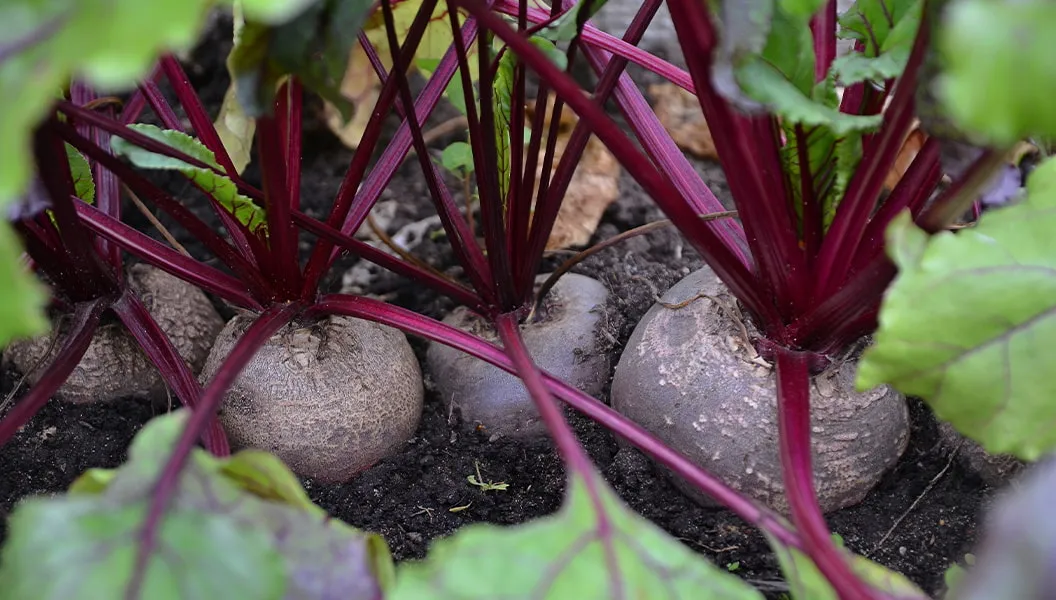Nostalgia in the kitchen: reinterpreting iconic dishes
18. August 2025

From the aroma of mum’s apple crumble fresh from the oven to the satisfying crunch of fish fingers at school dinners or grandma’s Christmas roast, our fondest memories are often tied to food. These familiar flavours and textures instantly transport us back to simpler, carefree times. After all, nostalgia is the secret ingredient in so many favourite dishes—and exactly what makes them so irresistible.
To make these beloved childhood dishes ready for modern gastronomy, we mix the power of nostalgia with unique new elements that add a contemporary touch. Whether seasonal, regional or international—ingredients like fresh herbs, Kikkoman Soy Sauce, tahini and fermented foods deepen flavours and introduce global influences. The result? Timeless dishes, refreshed for today’s kitchens.
Why familiar food makes us so happy
Childhood food isn’t just fuel—it’s a journey back to simpler, carefree days. For many, those instantly recognisable flavours are a direct link to the past. So it’s only natural that modern menus are beginning to revisit traditional classics with a fresh new spin.
Here's why we have such positive associations with our favourite childhood foods:
Emotional memory
We’re all creatures of habit, so it’s no surprise we prefer familiar tastes and smells. They tap straight into the brain’s emotional memory centre, the limbic system. Just a spoonful of semolina pudding or the scent of mash can instantly bring back memories of childhood, family or home. This kind of ‘sensory recall’ works even more powerfully than visual or auditory triggers like photos or music.
Feeling of comfort and security
The foods we loved as children often come from times when we felt safe, cared for and looked after. Even the simplest dishes like pasta with ketchup become powerful symbols of comfort, love and familiar routines. When adult life feels uncertain or overwhelming, they become the perfect emotional retreat—an edible reminder of security.
Cultural identity and tradition
Many childhood favourites are family recipes or regional classics passed down through generations. When a dish evokes memories of shared meals with parents, grandparents or siblings, it naturally reinforces our sense of belonging and identity.
Culinary nostalgia meets the plant-based trend

While traditional dishes remain undeniably delicious, their meat-heavy focus sits increasingly uneasily with modern tastes. As home cooks and restaurants alike embrace meat-free meals, you might wonder where classics like shepherd’s pie, toad-in-the-hole or sausage rolls find their place. But don’t worry—the two aren’t mutually exclusive!
Plant-based alternatives
Meat-free dishes made from plants have become a firm fixture in modern kitchens. The days of offering a token side salad as the vegan option are long gone. More and more people want to eat consciously while keeping the dishes they grew up with, which is why classics like spaghetti Bolognese, cottage pie and hearty stew are being reinvented. Using lentils, tofu or jackfruit instead of meat, they deliver all the satisfaction and flavour of the originals.
The plant-based trend opens up creative ways to make classic recipes more sustainable, and often more flavourful, too. A splash of Kikkoman Soy Sauce adds that deep, savoury umami we associate with traditional dishes, minus the meat. So it’s easy to give childhood favourites a modern, vegetarian update while keeping all their emotional appeal.
But it's not just meat-free alternatives giving nostalgic dishes a boost—other ingredients can add a more contemporary touch, too.
Fusion cuisine: reimagining traditional recipes

While childhood flavours are a persuasive selling point for many diners, nostalgia alone isn’t enough in professional kitchens. Fusion cuisine bridges the gap—reworking classics to align with today's expectations: sustainability, plant-based options and global influences.
For chefs, this means standing out with innovative takes on familiar dishes. Recipes like spicy cheese spätzle noodles, braised king oyster mushrooms with carrot kimchi, or pulled squash 'chicken' with turmeric rice and red cabbage slaw are great examples of a healthy balance between old and new.
Potato salad with a twist
A hearty potato salad can be reimagined with a dash of rice vinegar, toasted sesame oil or Kikkoman Soy Sauce—adding new depth without losing its roots.
Roulades with a new take on the filling
Roulades with a kimchi-tofu filling don’t just appeal to a younger, more food-adventurous audience—they also bring a surprising, contemporary addition to a classic menu.
Sliced mushroom & miso cream stroganoff
Plant-based strips in a creamy white miso sauce with a hint of Kikkoman Soy Sauce—for rich umami depth and a modern touch.
A taste of home with a flavour of the future
When childhood memories meet plant-based variety, international flavours and a modern interpretation, the result is more than just a new menu item—it’s a whole new taste experience.
For foodservice professionals, classics aren’t a burden—they’re valuable foundations for modern cuisine. With just a few simple tweaks—like meat-free alternatives or innovative seasoning—these familiar favourites can be updated without losing their charm. The result? Menu variety, new customers, and nostalgia with a modern edge.




